Sanacore®GM can reduce carbon emissions in aquaculture, improving sustainability and productivity
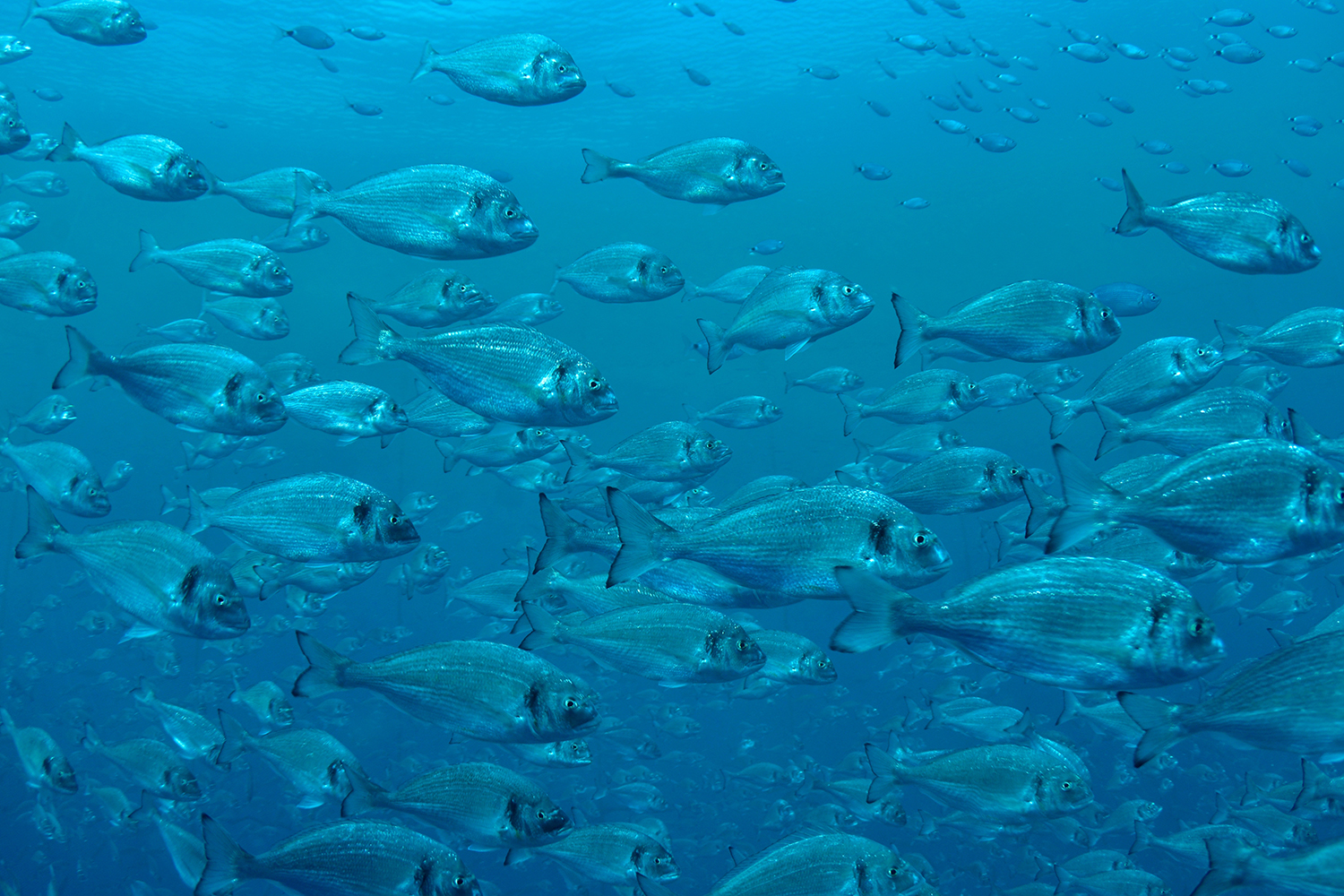
As defined in the Brundtland Report at the World Commission of Environment and Development in 1987, ‘’Sustainable development is the development that meets the needs of the present without compromising the ability of future generations to meet their own needs.’’
In 1992, at the Earth Summit in Rio de Janeiro, the notion of sustainable development was further amended by specifying three key parameters – environment, economy and society – which must always be taken into account. It is scientifically documented that the surpass of planetary boundaries jeopardizes the integrity of the systems, whereas Earth becomes more unstable and less resilient.
By 2050, Earth is forecasted to host around 10 billion people and global food demand is expected to increase by 50 percent. The environmental impact of the whole-food value chain is rather significant since its produced greenhouse gas emissions contribute to one-quarter (~13.7 billion tons CO2 equivalent) of global greenhouse gas emissions. Specifically, animal farming accounts for approximately 14.5 percent of total greenhouse gas emissions. Therefore, the challenge is to produce more food while minimizing the environmental impact of the process.
Sustainable production is now an essential element in the strategy and roadmap of every company that has durability and vision for the future. At Adisseo, we share a very clear mission: To feed the planet in a high-quality, affordable, safe and sustainable way.
Following the life cycle approach, all life stages of a product, activity or organization must be considered when we aim for sustainable production. Feed additives have a role to play in the early stages of the aquaculture and agriculture life cycles. Since the most significant part of the total footprint takes place during the stages of feed production and animal farming, feed additives can positively impact exactly those crucial steps (Fig. 1).

Successful application of health-promoting feed additives can make a tangible impact on disease prevention by demonstrating activity against the causative agents but also by boosting the health status of cultured organisms. Preventive health strategies can reduce mortality and increase performance since diseases are among the most important factors that hamper productivity in aquaculture by causing significant loss of biomass. Additionally, when disease management is based on treatment instead of prevention, the environmental footprint is exacerbated as well due to the use of chemicals and antibiotics. Health-promoting feed additives are an essential component of a disease prevention scheme, not only by decreasing mortality but also by contributing to the sustainability of the production.
A reliable and commonly accepted method to assess the environmental impact of a feed additive, or generally any product or service, on the environment is Life Cycle Assessment (LCA). LCA is a holistic approach that integrates all individual life stages of the food value chain and explores the interactions among these stages. By measuring the inputs and outputs of material flows, the impact of an intervention such as the inclusion of an additive can be quantified and valuable conclusions can be extracted. A well-grounded LCA depends a lot on the quality and quantity of data, therefore there are open databases, such as GFLI, that the industry is using and include reference values. (Adisseo is a GFLI corporate member.)
Sanacore®GM boosts productivity and reduces the carbon footprint in seabream production
Sanacore®GM is a broad-spectrum health-promoting feed additive, which is based on the synergistic activity of natural compounds, developed by Adisseo. Sanacore®GM has been well documented to support gut integrity, reduce the impact of endoparasites such as Enteromyxum leei, and therefore improve performance and productivity.
To assess the impact of Sanacore®GM in sea bream (Sparus aurata) production, publicly available farm data from Garcia et al. 2016 were used, along with the input of veterinarians regarding FCR during three disease prevalence scenarios: low, medium and high, and two production sizes: 350 and 500 grams. The inclusion of Sanacore®GM generated an improvement of 8–10 percent on FCR and biomass due to the reduction of mortality.
The results of the LCA demonstrated that the carbon footprint for regular seabream production, without Sanacore®GM are 6.9–7.9 kg CO2-eq/kg live weight for 350gr size seabream and 7.3–9.5 kg CO2-eq/kg live weight for 500-gram sea bream, varying according to disease pressure. As with the cost of production, the largest cut of this number is assigned to the feed. Around 39–42 percent of the carbon footprint in seabream production is because of feed production, whereas another 29–32 percent is related to the land use change which is directly related to the feed production process.
Land use change is mainly connected to the soybean that originates from Latin America, where its production can be associated with deforestation. Energy also plays an important role in the carbon contribution to the levels of 15–21 percent and last but not least, indirect emissions because of nitrous oxide formation rank at an extra 6–7 percent of the total carbon emissions in kg CO2-eq.
The inclusion of Sanacore®GM in the feed has had a positive impact in carbon footprint reduction which was caused by the reduction of mortality and improvement of FCR that had a positive domino effect across all stages of production. An estimation of 7.5 percent less carbon emissions was achieved by using Sanacore®GM compared to the regular production without the additive, across different levels of disease pressure (Fig. 2, Fig. 3).
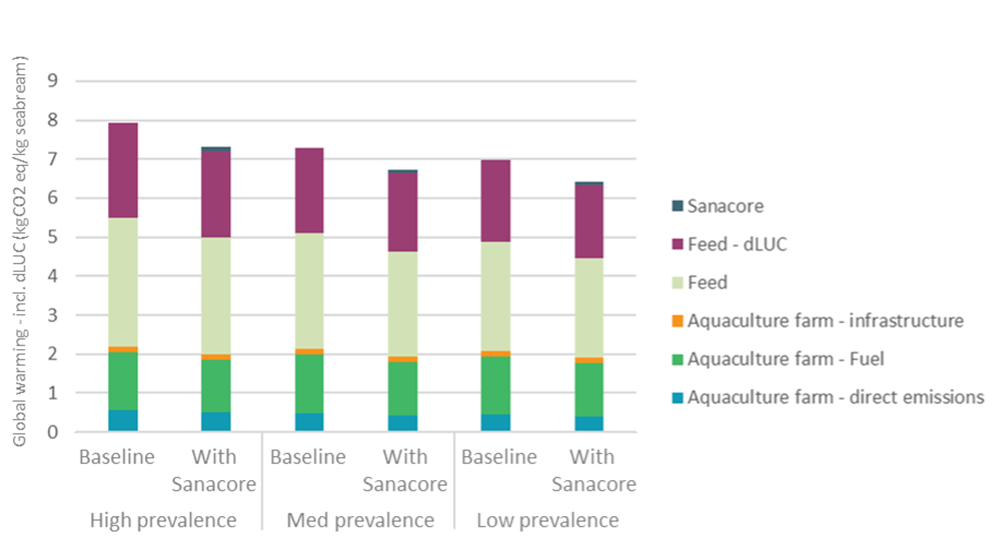
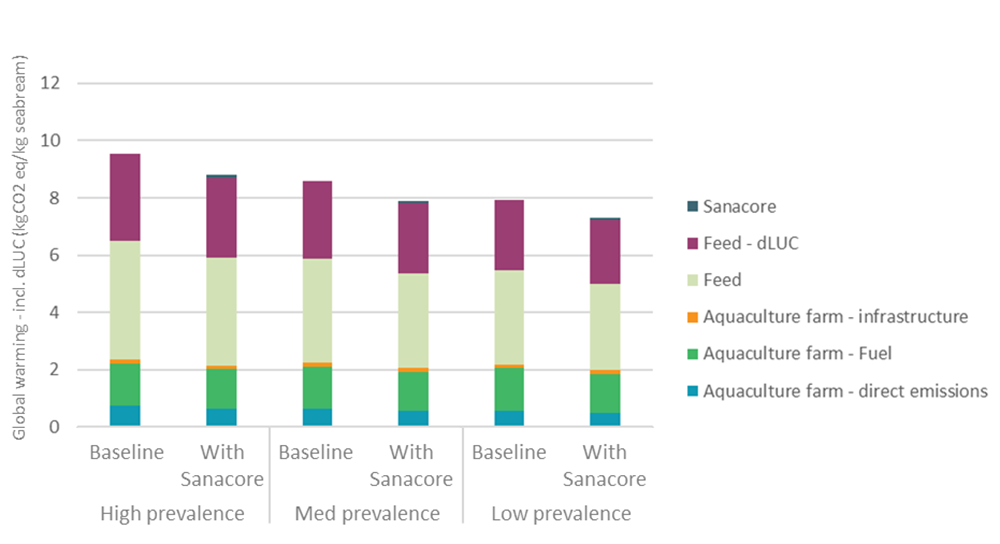
Conclusions
The global situation today requires that we all take clear actions to secure the sustainability of the planet for future generations to come. Sustainable production coupled with the assessment of the environmental footprint can already influence decision-makers and stakeholders, raise awareness, increase market value and decrease production costs, while making a tangible contribution to a safe growth pathway. Based on the LCA of Sanacore®GM in sea bream production it can be concluded that:
- Inclusion of Sanacore®GM significantly reduces the carbon footprint of the production process by 7.5 percent across low, medium and high levels of disease pressure.
- The production of Sanacore®GM likely has a negligible contribution to the total footprint of the process due to its very low inclusion as a functional feed additive.
Disclaimers
- External verification has not been performed.
- Since the farm data are indicative (Garcia et al., 2016), results should also be considered indicative for the potential impact of Sanacore®GM on farmed seabream. The exact impact of Sanacore®GM on a specific farm must be determined based on the real data of that particular farm.
Authors
-

Adisseo
-
Panos Kalatzis
Regional Manager, Aquaculture-Europe
Adisseo -
Maria Mercè Isern-Subich
Global Product Manager, Aquaculture Health
Adisseo -
Waldo Nuez, DVM, Ph.D.
Global R&D Manager, Aquaculture
Adisseo -
Björn Kok
LCA Data and methodology specialist
Blonk Sustainability
Tagged With
Related Posts
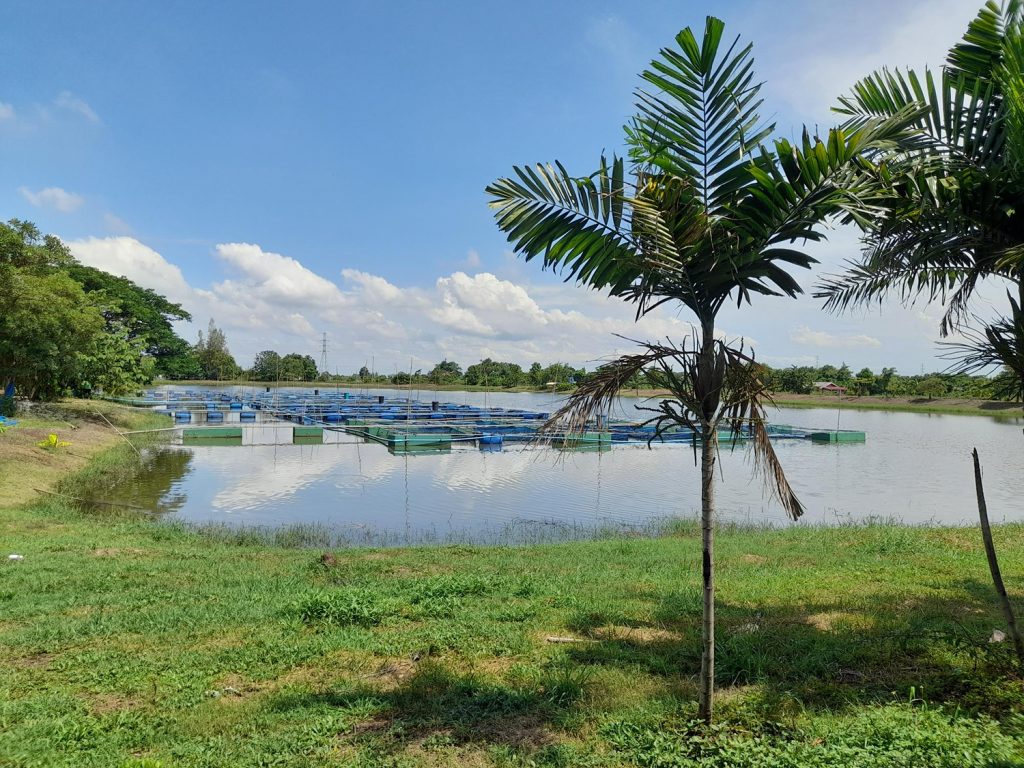
From Our Sponsors
Aquafeed additive from Adisseo can reduce the impact of bacterial diseases for fish and shrimp
In aquaculture trials with Pacific white shrimp and Nile tilapia, Bacti-nil® Aqua, an aquafeed additive from Adisseo, effectively prevented disease and promoted growth.
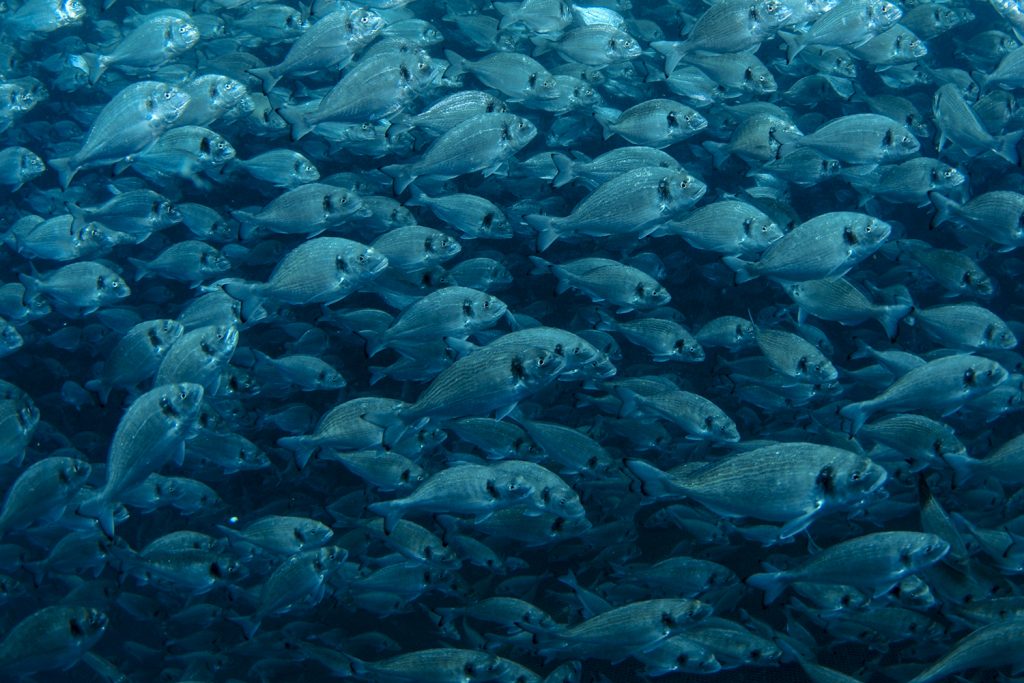
From Our Sponsors
Fish diseases hinder aquaculture growth and threaten global food security. Could this feed technology help secure the sector?
APEX® BRANCHIA – a functional feed additive from Adisseo – can reduce the impact of fish diseases and promote fish productivity and survival.
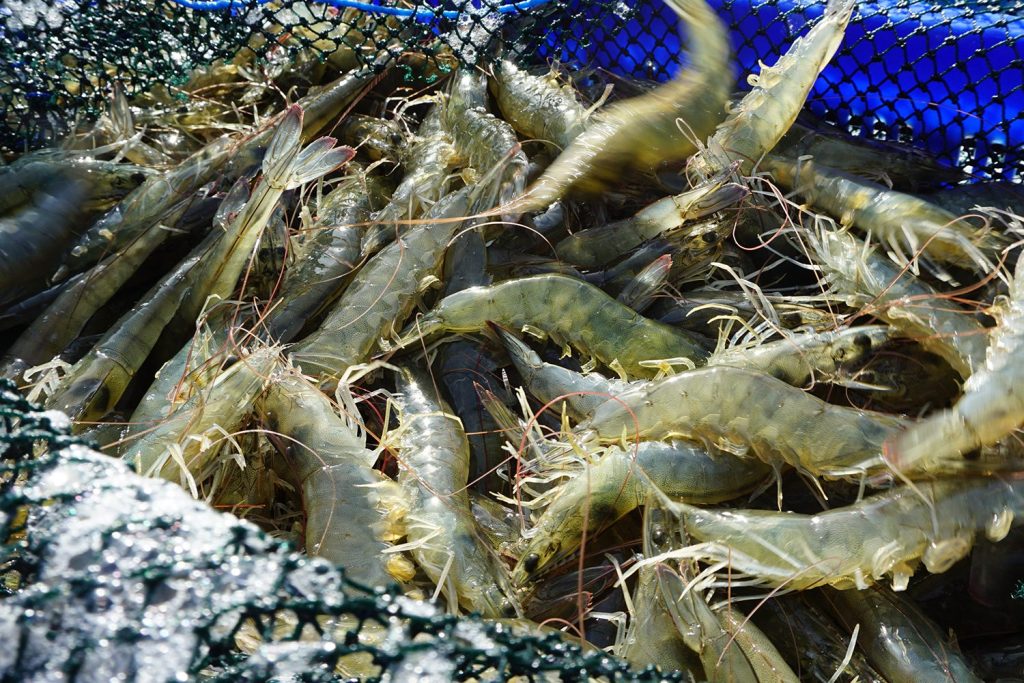
From Our Sponsors
Make fish feeds perform with less fat and energy in times of high fish oil prices
Aqualyso, a lyso-phospholipid-based digestibility enhancer for fish and shrimp, can help relieve cost pressure from high fish oil prices.
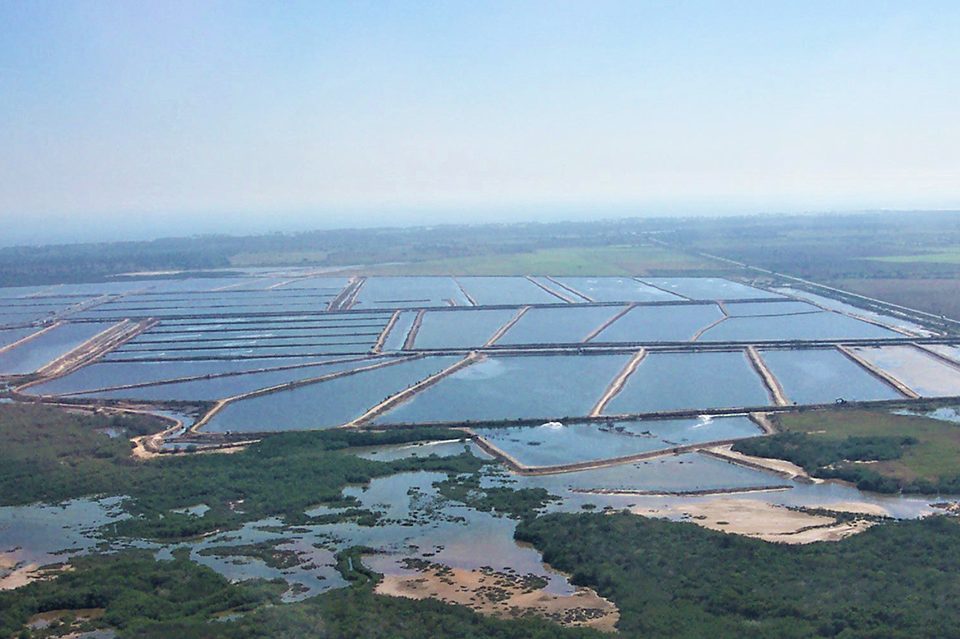
From Our Sponsors
Functional feed additives reduce the carbon footprint of shrimp production
Sanacore®GM and Aqualyso® from Adisseo are aquafeed additives with a long history of successful use on shrimp farms facing common diseases.


